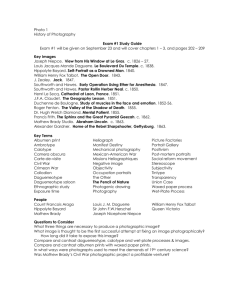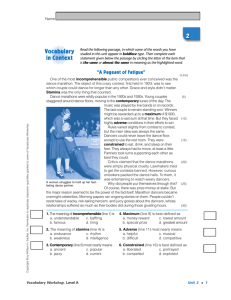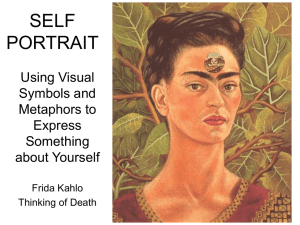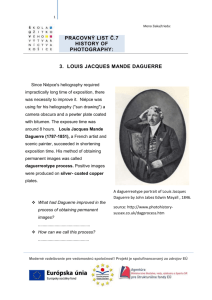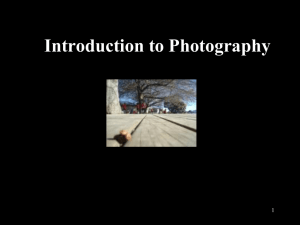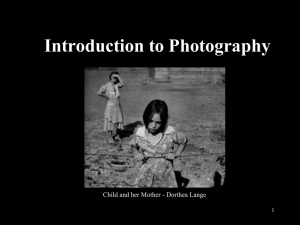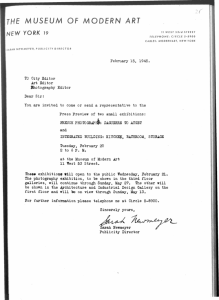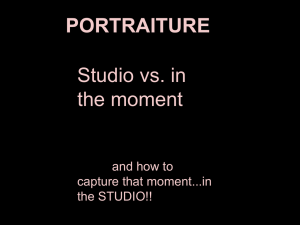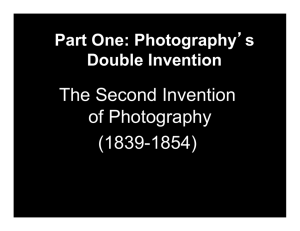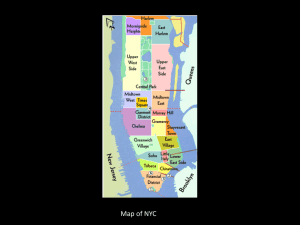Julia Margaret Cameron, Portrait of Thomas Carlyle, 1863
advertisement
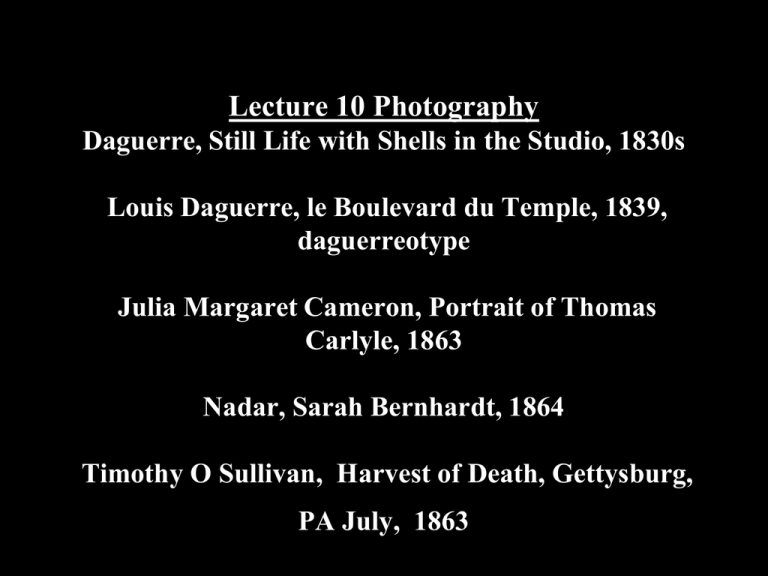
Lecture 10 Photography Daguerre, Still Life with Shells in the Studio, 1830s Louis Daguerre, le Boulevard du Temple, 1839, daguerreotype Julia Margaret Cameron, Portrait of Thomas Carlyle, 1863 Nadar, Sarah Bernhardt, 1864 Timothy O Sullivan, Harvest of Death, Gettysburg, PA July, 1863 Lecture 10 Photography daguerreotype carte de visit Louis Daguerre, Solomon’s Temple, 1826, painted set backdrop Camera obscura Louis Daguerre,1789-1851, theatrical set painter, designer, invented the daguerreotype. He developed an impressive illusions theatre, which he termed Diorama; it was a picture show with changing light effects and huge paintings measuring 22 by 14 meters, of famous places. He regularly used a camera obscura as an aid to painting in perspective, and this had led him to seek to freeze the image. In 1826 he learned of the work of Nicephore Niépce, and signed up a partnership with him. Although he now knew how to produce an image, it was not until 1837 that he was able to fix them. Daguerre, Still Life in a Studio, 1830s Daguerre, Still Life with Shells in the Studio, 1830s Daguerreotypes were single, unique images etched in light on a metal photosensitive plate. . He also discovers a “fix” – a chemical solution that would fix the image making it permanent – prior to this time the image would get darker and darker. Explosion of interest – daguerreotype technology shared and cameras were widespread. Every detail is observable. Texture. Imitates the Dutch still life tradition. Carefully constructed. In early daguerreotypes, composition is considered central. Indebted to previous art tradition. Continuity between painting and photography Louis Daguerre, le Boulevard du Temple, 1839, daguerreotype In early daguerreotypes exposure times were very long. On this street scene in Paris, no moving figures were captured on the plate. However, one man having his shoes shined stayed still long enough to become part of the image. This is the first person in a photograph. Eugene Durieu and Eugene Delacroix, Draped Model c 1854 Eugene Durieu and Eugene Delacroix, Odalisque, c 1854 The benefits of photography were immediately recognized by many artists of the period who worked collaboratively with photographers. Photography provided Delacroix with a permanent image of the nude model Albumen print: Photographic process invented in 1850 by Louis-Désiré Blanquart-Evrard, prevalent until 1890. After floating on a bath of albumen (egg whites) and salt, the paper was coated with silver nitrate solution, dried, and placed directly under a negative for printing. Known as “wet plate” technology – plate was exposed and developed and fixed while wet. Plates had to be processed on the spot requiring outdoor portable darkrooms Eugene Durieu and Eugene Delacroix, Draped Model c 1854 Ingres, Grand Odalisque, 1814 Early photographs were based on subject and compositions borrowed from paintings. Julia Margaret Cameron, Portrait of Thomas Carlyle, 1863 Photography becomes the first significant form of portraiture. Inexpensive to produce and sell. Early example of celebrity photography. Thomas Carlyle – historian, and writer. Cameron is a pioneer of photography as an art form. She asks, what is focus? She thinks the blurring drew attention to the light emanating from her subject thus creating a metaphor for artistic genius. Gaspard-Felix Tournachon aka Nadar, Self Portrait, circa 1875. Nadar was a novelist, journalist, balloonist, caricaturist, photographer. Popularized the portrait – successful in capturing the likeness of his sitters – most important people in France flock to his studio. Nadar, Sarah Bernhardt, 1864 Nadar, Eugene Delacroix, 1850’s Quickly after the invention of reproducible photo imagery, media like the carte de visite (an albumen print photograph measuring 2.125 x 3.5 inches mounted on a card sized 2.5 x 4 inches – like a postcard today). The carte de visite were widely popular and lower and middle class consumers bought these little artworks for pennies. Circulation and sharing of early photos made international stars of individuals like Bernhardt who realized that carefully staged and circulated photographs could create a “buzz” about her. Delacroix, Great Romantic artist at the height of his career. Nadar captures the presence of the man with gesture and expression to create a revealing mood Josiah Johnson Hawes and Albert Sands Southworth, Portrait of a Man Daguerreotypes appear in the USA only two months after they were introduced in Paris. Hawes and Southworth was a large portrait studio in Boston. $2 bought you a portrait in 1850. Portraiture becomes available to the middle class for the first time. Josiah Johnson Hawes and Albert Sands Southworth, Early Operation Under Ether, MA General Hospital 1847 Daguerreotype Photographs were considered educational. This photograph functions as a portrait and as a record of the operation. Position of viewer, from above, is that of the medical students. Blurring of figures betrays motion. Matthew Brady, Lincoln, c 1860 Photographs of political figures are collected and popular. These works were considered educational and learning the likenesses of political figures was a form of literacy even if one couldn’t read. Brady’s image of Lincoln was chosen for his portrait on the $5 bill. Matthew Brady, Dead in a Hole, 1860s Timothy O Sullivan, Harvest of Death Gettysburg, PA July, 1863 Photographers Brady and O’Sullivan known for their photographs of the civil war. Documentary nature of photography and its power were soon realized. Medium gained great influence on modern life and to the communication of information. Photographs of war dead had unparalleled effects in communicating the horrors or war. Not battles: the exposures time needed to capture an image was too long for motion. Bodies on landscape as far as the eye can see. Use of the horizon. The horrors of the battlefield are visible such as stolen boots and pockets pickets. Jacob Riis, Five cents a spot, 1889 Jacob Riis, A NY Tenement, 1910 Riis comes to the US from Denmark in 1870 works as a writer and reporter and social activist. Exposed tenement housing and immigrant life on the lower east side of Manhattan.
